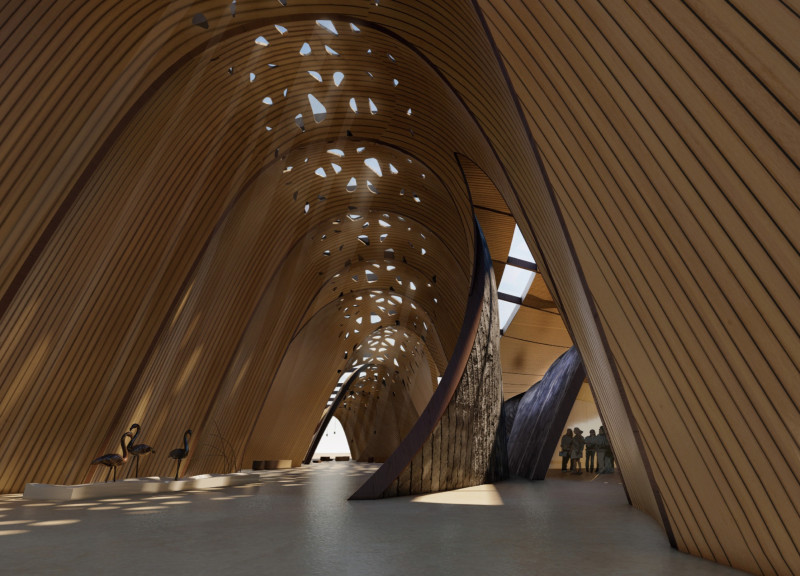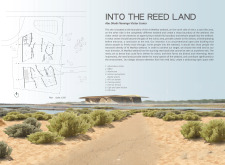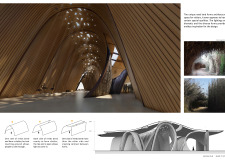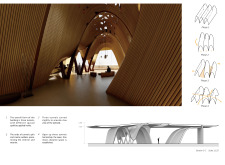5 key facts about this project
The Abu Dhabi Flamingo Visitor Center is located at the boundary of the Al Wathba wetland, a site known for its rich ecological diversity. Serving as an entry point to the surrounding landscape, the center invites visitors to explore and engage with the unique environment of the wetland. The design emphasizes openness and fluidity, allowing individuals to connect with nature before even stepping outside.
Architectural Concept
The layout of the center is open and adaptable, designed to encourage movement and interaction. It revolves around three main tunnels, each offering a different experience for visitors. These tunnels are arranged to provide views of the wetland, creating framed perspectives that change as people walk through the space. The intention is to guide visitors on a journey that brings them closer to the habitat, enhancing their understanding of the ecosystem.
Spatial Interaction
The building’s forms are inspired by the reed lands that characterize the wetland. This design choice creates welcoming spaces that blend with the natural environment. Areas for gathering and reflection are integrated within these forms, providing visitors a chance to pause and observe the ecosystem. The interplay of architecture and nature invites individuals to engage more deeply with their surroundings, fostering a sense of connection.
Material Selection
The design features a thoughtful selection of materials that enhance its relationship with the environment. Key elements include wood beams, wood roof cladding, bamboo strip ceilings, stone exterior wall cladding, and bamboo strip interior wall cladding. These materials help to establish a bond with the wetland, while also ensuring the durability of the structure in a humid climate.
As visitors move through the center, they encounter carefully positioned openings that frame views of the reed landscape. Each perspective offers insight into the ecological importance of the wetland. The architectural forms, serving practical functions, also reflect the essence of the environment, encouraging a closer look at this significant habitat.






















































